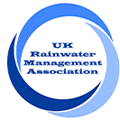Protecting supply for the future - droughts
At Stormsaver we are always considering our surrounding environment. That’s why this week we are focusing on a growing concern amongst environmental scientists. Droughts are increasing in frequency across the globe, particularly in the UK. Our blog will guide you through what they are, the different types of droughts and how we can help manage supply to protect us in the future.
But what are droughts and why are they so detrimental to the population they can affect?
Droughts are a sustained period where there is a distinct lack of rainfall within a given region or country. As droughts are natural occurrences, planning and mitigation for the events can be somewhat difficult due to their sporadic timing.
According to the Environment Agency, droughts can be classified in three different ways, with each type having their own implications for the regions they hit. Environmental droughts are classified through an absence of rainfall for a sustained period.
Agricultural droughts occur when there are low moisture levels in soil to sustain crop growth. Crop growth is an essential part in a balanced diet and could lead to nutrition issues if an agricultural drought occurs.
Finally, a water supply drought is when there is a distinct lack of rainfall to replenish reservoirs causing demand to outstrip supply. Supply issues of this type can cause drinking water shortages and water quality issues. As our population grows and we expand our housing portfolio, there is potential for major shortages in the future if these droughts continue. Some experts say that by 2050 the UK will experience significant water shortages if these trends continue.
What are the problems and why does this matter to me?
As a society we can experience a whole range of problems during droughts and implications vary depending on the characteristics of the event. As already mentioned, drinking water supplies can be significantly affected. In terms of water quality, there is potential for higher rates of pollutants meaning increased filtration is needed to sustain strict consumption standards. Water can also become stagnant if a flow is cut off due to a dry riverbed.
Droughts can also affect farming operations with the potential for imbalanced soil conditions causing a lack of sustainable ground conditions. In the longer-term, food prices could increase leading to an imbalanced diet within the population.
Sanitation and hygiene are a daily practice within our lives, but should a drought occur society would need to limit general hygiene practices in line with a reduction in supply. As a result, diseases are more likely to spread amongst our population.
Meh, not my issue, it doesn’t affect the UK.
Wrong! Although the UK climate is highly variable and perceived to be generally wet, we are experiencing longer, drier summers. Our water supply stores generally tend to replenish during the period of April to November indicating that if a drought occurs our supplies could be dramatically reduced. In fact, research shows the period between 2010-2012 was the driest 18 months in the UK for 100 years.
Okay, so what’s the solution?
Many suggest that we need to diversify our supply network in the UK to ensure we have a resilient system even in the event of a drought. However, there is a much more manageable solution for society to take advantage of… managing our water consumption habits!
This means that we need to continue our efforts to save water across the globe. See our water saving blog to learn about water saving tips!
Our bespoke rainwater harvesting systems can reduce reliance on a mains water supply for any building. Rainwater water harvesting can distribute recycled water from a roof area and distribute it to points of use for non-potable applications. Our applications include, WC flushing, urinals, irrigation, vehicle wash plants and dust suppression systems. A comprehensive storage and filtration system ensure water is of the highest quality for use across the building giving you complete peace of mind.
Rainwater harvesting will allow water utility companies to develop their natural reserves in reservoirs as more commercial and residential building use harvesting systems as a means of supplying non-potable uses. This allows more resilience during a drought scenario, potentially lessening the affects.
.jpg) Why not consider us for all non-potable applications?
Why not consider us for all non-potable applications?
Do you have a demand for non-potable water on your site or project? Why not consider a rainwater harvesting solution which allows your business to take advantage of natural resources to fulfill a demand. This equips your site to carry out normal operations in a sustainable manner, allowing your business to boost its eco credentials.
Our comprehensive systems can be installed in a hassle-free method to ensure a reliable supply of recycled rainwater. Some system users are experiencing savings of 75% off their mainswater bill as well as reducing reliance on carbon-producing mainswater.






